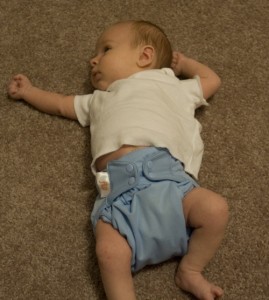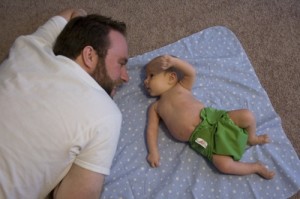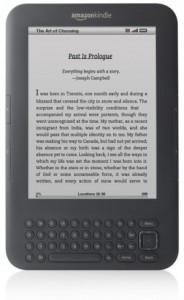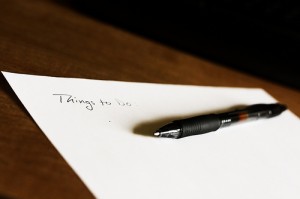 Before I was even pregnant, I made the decision that I was going to try cloth diapering. I was committed to the idea, but totally overwhelmed. With so many options, laundering methods, and rules, it seems so complicated.
Before I was even pregnant, I made the decision that I was going to try cloth diapering. I was committed to the idea, but totally overwhelmed. With so many options, laundering methods, and rules, it seems so complicated.
The good news? It’s really NOT as complicated as the Internet makes it seem. Which is actually a pretty good mantra now that I think about it. It’s not as complicated as the Internet makes it seem.
Now that I’ve been cloth diapering for over two months, I’ve gotten into a pretty good groove. I’m going to share some of the things I’ve learned. I have learned a lot, so I’m splitting it up into two posts. I really hope this doesn’t make it seem even more complicated, because I promise, it’s really not.
Cloth diapering is NOT extreme.
The biggest misconception about cloth diapering is that you have to be some kind of intense money-saver or environmental extremist to do it. While those people do cloth diaper, the truth is, it’s really not that much of a hassle compared to disposables, especially if you’re breastfeeding. I’ve used both, and I actually prefer cloth. In fact, I have two packs of disposables left over from my baby shower that I’m going to give away, because Judah will be too big for them soon, and I’d rather use cloth.
Poop is poop, and you’re going to have some gross diaper changes no matter what kind of diaper you use. Changing diapers is a pain in the butt (no pun intended) whether you use cloth or disposables, and nobody includes diaper changes on their list of favorite activities. The only difference between cloth diapers and disposables is two or three extra loads of laundry per week.
I can’t tell you how many disposable diaper users have watched me change diapers and said, “Huh. So those are cloth diapers? That doesn’t seem as hard as I thought it would be.”
You don’t need a huge stash to get started.
If you’re new to cloth diapering, it really doesn’t take much to get started. There are a ton of options, but you really just need a very basic list of essentials.
- 24-36 diapers
- 3-4 diaper covers if you’re using prefolds
- 2-3 Snappies or sets of diaper pins
- 1 wet bag or diaper pail for storing dirty diapers
- 1-2 smaller waterproof wet bags for storing dirty diapers in you’re diaper bag when you’re out
- 24 cloth wipes
It’s not necessary to spend $20 per diaper.
If pocket diapers and all-in-one diapers work for you, then great! I’m glad you’ve found an option that works well for you. I couldn’t bring myself to spend $20 a pop on something my baby was going to poop on. I have a few pocket diapers and all-in-ones, and I may want to buy more to use for overnights or when Judah is resisting diaper changes, but for right now? Prefolds and covers are getting the job done for a fraction of the cost.
Prefolds require a little extra work, but you save the extra time on laundry. They wash quicker and much easier than fancier diapers, dry faster, withstand a lot of abuse, and are so cheap that I really don’t worry too much about messing them up.
I buy the Indian prefolds from Cotton Babies. My covers collection includes some Flips, Thirsties*, Econobums (which I highly recommend for anyone who wants to try cloth diapering on a tight budget — they work well, and they’re cheap), and a couple Bummis Whisper Wraps. Most of my diapers were purchased on clearance, so I have the covers only — no inserts. I use them with regular prefolds. You can see a complete list of my stash here.
You’ll want at least 24 diapers for a baby under four months old. You can probably get away with just 3 or 4 diaper covers, because you don’t change the diaper cover with every diaper change. I only change a diaper cover if a particularly messy diaper leaks through to the cover. Most of the time, that doesn’t happen. I wipe the cover with baby wipe and use it again. Covers may start to stink a little after several changes. When that happens, I change to a fresh one.
Don’t bother with newborn-sized diapers.
Most diapers these days are adjustable, so one size fits most babies from a few weeks after birth to potty training. Manufacturers say diapers fit 7-pound babies and up, but consensus among cloth diapering moms is that the fit generally isn’t great on newborn babies with skinny legs.
You don’t have to buy tiny diapers, though! Unless you have a tiny baby, you probably won’t get much use out of newborn-sized diapers. It can take a week or two for the meconium (yucky black-tar poo that stains) to completely work its way out of baby’s system, and guess what? You’re going to be busy getting to know your baby and recovering from delivery in those first couple weeks.
Do yourself a favor and put a few packs of disposables on your registry and use disposables for the first couple weeks after your baby is born. It’ll make the transition to cloth much easier and cut back on laundry as you recover from birth. If you do have a tiny baby, and you can’t stand the thought of using disposables for a couple months, you can always invest in newborn diapers later. It’s unlikely you’ll need them unless your baby is under 7 pounds, and even a 6-pound baby will only use them for about 2-3 months.
Once your baby is about 10 pounds, one-size cloth diapers should fit fine. The only sized diaper covers I bought were Thirsties size 1s, and they fit Judah great when he was 8-9 pounds. By the time he was 10 pounds, all of my one-size covers fit well enough to avoid leaks.
If you use cloth wipes, you don’t have to make a “wipe solution.”
I had big plans to sew my own flannel baby wipes. But I never got around to it when I was pregnant, and there’s no way Judah is going to give me a solid block of time in front of a sewing machine right now. The good news is these cloth wipes are nicer than anything I could make and pretty affordable. You can also use baby wash cloths, but I found that they’re about the same price and not as soft.
I received a ton of disposable baby wipes at my baby shower, and I only just recently used all of them up. For me, they were a real pain. The instinct is to throw the wipe into the diaper, so I was always fishing disposable wipes out of my laundry. Or setting a soiled wipe aside and throwing it away separately.
I started using cloth wipes last week, and they are SO much easier. Here’s my secret: you don’t have to make a homemade wipe solution. All you need is a little spray bottle of water. I spritz the water on my baby’s butt, wipe him clean, throw the wipe into the laundry with the diaper, and I’m done.
I looked at all kinds of homemade wipe solution recipes and even considered spending the money for a premade wipe solution with all kinds of fancy ingredients. Several people warned me that baby wash based homemade solutions would leave my baby rashy. So I decided to try just water. It’s gentle, it cleans him well, and his skin has actually been less irritated using water than it was using baby wipes.
I bought a small storage container about the size of a disposable baby wipes container. It holds my wipes and my spray bottle and fits easily in my diaper bag. You could also repurpose a disposable wipes container.
Tomorrow I’ll share some tips on how to wash and care for your cloth diapers.
I have not been compensated in any way for the recommendations made in this post. However, I do receive a small affiliate fee for purchases made through Amazon links, which are denoted with this symbol *.
 Ever since I started living frugally, one of the areas of my budget that continually leaves me feeling guilty is groceries. My husband is the cook, and he has extremely expensive tastes when it comes to cooking. I gave up trying to convince him to live on a beans and rice diet to save money a long time ago. To be honest, the idea of eating as cheaply as possible doesn’t appeal to me much, either. I absolutely admire those families who can feed four people for $50 a week, but we’re never going to be one of them. (We average about $60-$70 per week for the two of us. Judah doesn’t count yet.)
Ever since I started living frugally, one of the areas of my budget that continually leaves me feeling guilty is groceries. My husband is the cook, and he has extremely expensive tastes when it comes to cooking. I gave up trying to convince him to live on a beans and rice diet to save money a long time ago. To be honest, the idea of eating as cheaply as possible doesn’t appeal to me much, either. I absolutely admire those families who can feed four people for $50 a week, but we’re never going to be one of them. (We average about $60-$70 per week for the two of us. Judah doesn’t count yet.)





